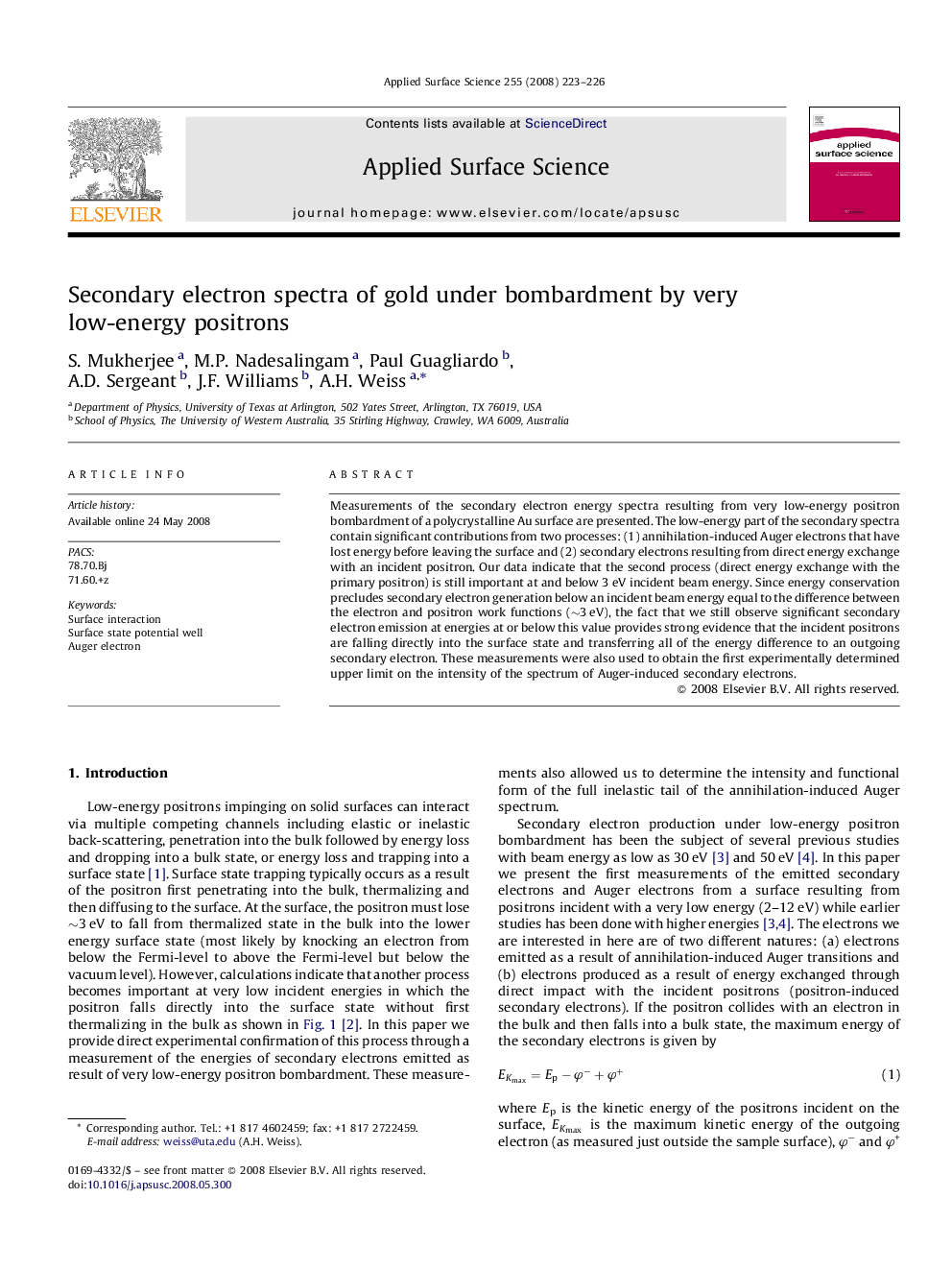| Article ID | Journal | Published Year | Pages | File Type |
|---|---|---|---|---|
| 5365432 | Applied Surface Science | 2008 | 4 Pages |
Measurements of the secondary electron energy spectra resulting from very low-energy positron bombardment of a polycrystalline Au surface are presented. The low-energy part of the secondary spectra contain significant contributions from two processes: (1) annihilation-induced Auger electrons that have lost energy before leaving the surface and (2) secondary electrons resulting from direct energy exchange with an incident positron. Our data indicate that the second process (direct energy exchange with the primary positron) is still important at and below 3Â eV incident beam energy. Since energy conservation precludes secondary electron generation below an incident beam energy equal to the difference between the electron and positron work functions (â¼3Â eV), the fact that we still observe significant secondary electron emission at energies at or below this value provides strong evidence that the incident positrons are falling directly into the surface state and transferring all of the energy difference to an outgoing secondary electron. These measurements were also used to obtain the first experimentally determined upper limit on the intensity of the spectrum of Auger-induced secondary electrons.
